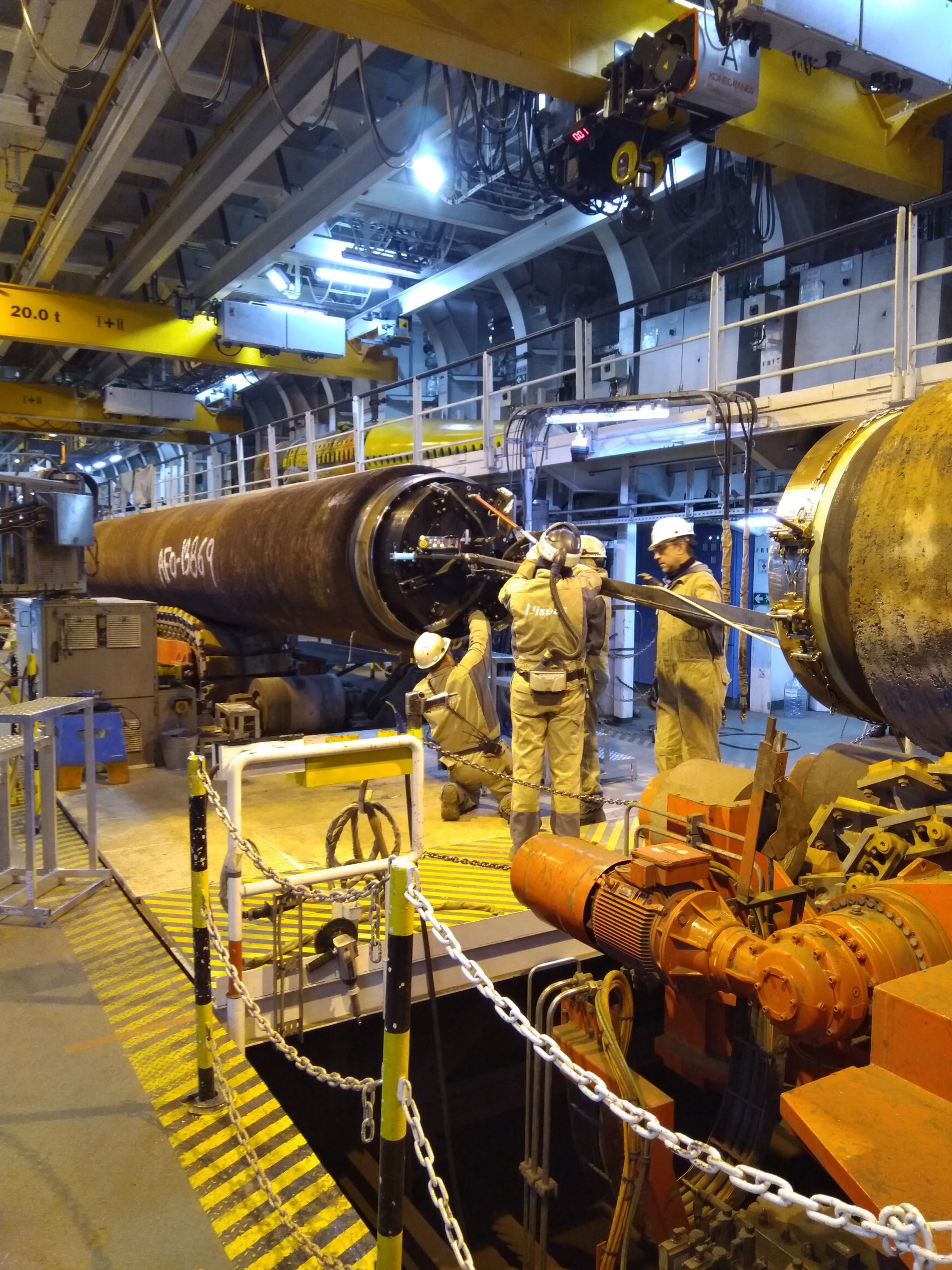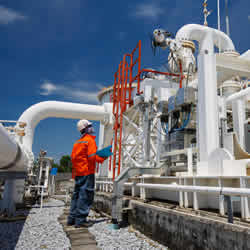Recognizing the Fundamentals of Pipeline Welding Inspection: Crucial Factors for Evaluating Weld Quality and Averting Failures
In the world of pipe welding inspection, the stakes are indisputably high, demanding a thorough understanding of basic principles to ensure weld quality and reduce failing dangers. Numerous vital factors enter into play, consisting of the choice of ideal materials, the application of sophisticated assessment methods, and the acknowledgment of common welding defects. Furthermore, adherence to regulatory criteria plays a crucial function in preserving system integrity. Yet, the complexities inherent in these procedures raise vital concerns about best methods and arising modern technologies that can redefine assessment protocols-- concerns that require more exploration.
Significance of Weld Top Quality
The stability of a pipe is basically reliant on the quality of its welds, making weld high quality a critical consider guaranteeing efficient and risk-free operation. A pipeline weld acts as a joint factor where products are signed up with, and any type of deficiencies in this field can lead to considerable architectural weaknesses. Poor weld high quality can lead to leaks, tears, and tragic failings, posing significant safety and security threats and ecological dangers.
Several elements add to the top quality of a weld, including the option of welding process, the skills of the welder, and the problems under which the welding is executed - Pipeline Welding Inspection. Poor prep work, improper warmth input, and contamination can jeopardize weld stability, bring about issues such as porosity, incomplete fusion, or fractures. For that reason, strict quality assurance actions must be carried out throughout the welding procedure to mitigate these risks
Additionally, the long-lasting performance of a pipeline is heavily affected by the toughness of its welds. Top quality welds not just boost the general stamina of the pipe yet additionally prolong its life span, reducing the demand for pricey repair services and downtime. For this reason, making sure remarkable weld top quality is vital in pipe style and maintenance methods.
Secret Inspection Methods
Ensuring weld top quality demands the implementation of effective assessment strategies to determine prospective defects prior to they bring about failures. Pipeline Welding Inspection. Among one of the most commonly utilized techniques are visual inspection, radiographic testing (RT), ultrasonic testing (UT), and magnetic particle testing (MT) Each strategy serves a distinct objective and is chosen based upon the particular demands of the pipeline task
Aesthetic inspection is the first line of defense, allowing examiners to assess surface conditions, placement, and general handiwork. Radiographic screening supplies an in-depth view of internal weld stability by making use of X-rays or gamma rays to detect subsurface flaws.
Ultrasonic screening uses high-frequency acoustic waves to assess the density and honesty of welds, making it ideal for discovering internal discontinuities. Magnetic particle screening is a dependable method for recognizing surface area and near-surface issues on ferromagnetic materials by using magnetic fields and great ferrous bits. By utilizing these vital examination techniques, pipe welding examiners can ensure the best requirements are preserved, eventually resulting in more secure and a lot more reliable pipe systems.
Common Welding Issues
Amongst the most widespread flaws are porosity, which occurs when gas entraps in the weld steel, developing spaces that weaken the joint. One more substantial concern is absence of combination, where the weld metal does not adequately bond with the base material, endangering the joint's toughness.

Splits are also an important worry, showing up in different forms such as hot cracks, cold cracks, and root fractures. Each type positions distinct difficulties and calls for certain examination strategies for detection. Undercut is one more problem that can reduce the weld's cross-sectional area, causing tension focus factors, while slag addition occurs when non-metallic product becomes entraped in the weld swimming pool, negatively affecting the mechanical residential or commercial properties of the weld.
Additionally, wrong bead shape can result in unequal stress and anxiety distribution. Acknowledging these typical flaws is necessary for inspectors and welders alike, as early discovery and correction are crucial to guaranteeing the durability and reliability of pipe systems.

Materials and Their Influence
Selecting the ideal materials for pipe welding considerably affects the total performance and reliability of the bonded joints. The choice of base steels, filler materials, and finishings plays an important role in determining the toughness, rust resistance, and resilience of the welds. For example, carbon steel is generally utilized for its equilibrium of stamina and expense, but it might be at risk to rust in certain settings, demanding making use of safety layers or corrosion-resistant alloys.
Additionally, different metal welding needs cautious consideration of official statement thermal growth residential or commercial properties and prospective galvanic corrosion. The compatibility of materials can significantly influence the check out here microstructure of the weld, bring about variants in mechanical homes. For instance, stainless steel offers superb corrosion resistance but may require certain filler materials to make sure an audio weld joint.
Additionally, the influence of temperature and environmental conditions on material option can not be ignored. High-strength steels might shed ductility at elevated temperatures, while low-temperature applications might call for products with boosted durability. Inevitably, understanding the ramifications of material options is important for accomplishing optimal weld quality and stopping failures in pipeline systems.

Regulatory Standards and Compliance
Regulatory criteria and conformity play a critical function in pipeline welding, developing the framework within which secure and efficient methods are maintained. These requirements are developed by various organizations, consisting of the American Culture of Mechanical Designers (ASME), the American Welding Society (AWS), and the Pipeline and Hazardous Materials Security Administration (PHMSA) Following these policies guarantees that welding treatments fulfill the needed top quality and safety and security criteria.
Compliance with regulatory standards is crucial not just for ensuring the honesty of the welds but additionally for protecting the environment and public security. Inspectors are tasked with confirming that welding operations follow these criteria via rigorous exams of both the processes and the last welds. This entails assessing welder qualifications, welding procedures, and the products made use of.
Failure to abide with well established regulations can bring about considerable consequences, including pricey repair work, lawful obligations, and disastrous failings. For that reason, companies must integrate compliance into their functional techniques, cultivating a society of safety and security and high quality. Normal training and audits are important elements in maintaining adherence to these regulative standards, making sure that all workers are educated and geared up to promote the highest possible levels of pipeline welding top quality.
Final Thought
To conclude, a comprehensive understanding of pipe welding assessment is important for ensuring weld quality and protecting against failures. By employing vital examination you can look here techniques and recognizing typical welding problems, assessors can successfully examine the honesty of welds. Consideration of product choice and adherence to regulatory requirements better boost the dependability and security of pipeline systems. Ultimately, these techniques add to the prevention of leaks and catastrophic failings, highlighting the essential significance of extensive evaluation processes in pipe building and maintenance.
In the realm of pipe welding inspection, the stakes are indisputably high, demanding an extensive understanding of basic principles to ensure weld high quality and reduce failing dangers (Pipeline Welding Inspection).The honesty of a pipe is essentially dependent on the high quality of its welds, making weld quality a crucial factor in guaranteeing efficient and secure operation.Numerous aspects add to the high quality of a weld, consisting of the option of welding process, the abilities of the welder, and the problems under which the welding is done. Undercut is another issue that can decrease the weld's cross-sectional location, leading to anxiety focus factors, while slag addition occurs when non-metallic product becomes entraped in the weld pool, negatively influencing the mechanical residential or commercial properties of the weld
In verdict, a detailed understanding of pipe welding inspection is crucial for guaranteeing weld top quality and protecting against failures.